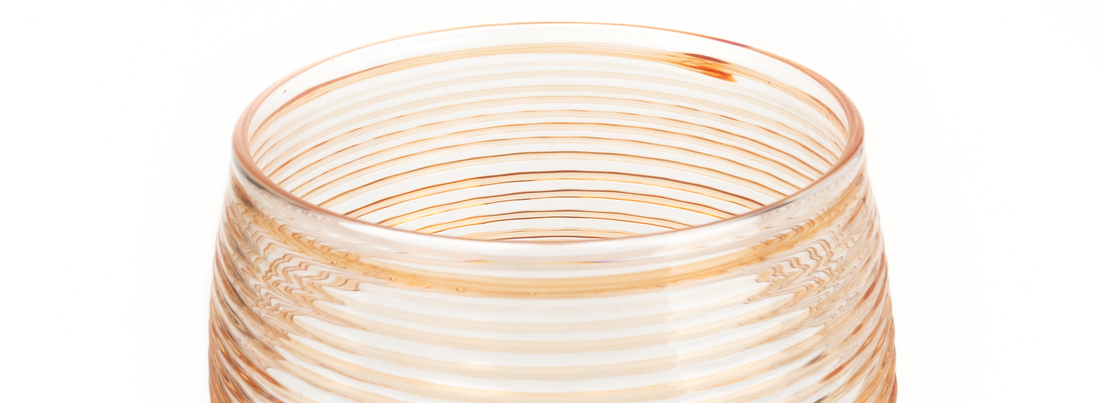
glass techniques
Share
Glass comes in a diversity of sizes, shapes, textures, and colours. If you've ever looked at some of the glass work in the CCBC shop and thought "how the heck do they make glass look like that?", read on to learn about the fantastic techniques of craft glass.
This post is an excerpt from pondercraft.ca, CCBC's educational website.
The techniques of craft glass exist in two stages: making and coldworking.
Making
The most common techniques of making are glassblowing, fusing and lampworking (also called flameworking).
Glassblowing

In glassblowing, clear molten glass (over 2000 degrees F) is collected from a furnace onto the end of a long steel rod called a blowpipe. The maker blows down the pipe and traps the air in the glass bubble, then shapes the glass with a variety of tools. To prevent the glass from becoming too cool and stiff, it is heated back up regularly in a large cylinder called a glory hole.
The maker adds colour in the form of a solid rod, frit (crushed glass) or powder. Depending on the size and complexity of the object being made, this shaping process can take from a few minutes to many hours. Decorative elements like enamel or metal leaf or foil can also be added at this stage.
Once the piece is complete, it goes into a very hot annealing kiln, where it is cooled down slowly over many hours. Annealing allows stress to be released from the glass, making it more durable and less prone to cracking and breaking.
Lampworking
Lampworking (also called flameworking) takes place at a table-mounted torch that typically uses a combination of oxygen and either propane or natural gas. The maker can use rods of soda-lime glass (also called soft glass, although it’s very hard before it melts in the torch) or borosilicate glass to make beads, jewellery items, small sculptures, and figurines. The maker uses various areas of the torch flame to alternately melt and stabilize the object they are making. Lampworkers also use glass frit and powder, enamels, and metal leaf and foil. The tools used in lampworking are often smaller-scale versions of the ones used in glassblowing. Lampworked pieces can take from a few minutes to over an hour to create.
Once the piece is complete, it goes into a very hot annealing kiln, where it is cooled down slowly over many hours. Annealing allows stress to be released from the glass, making it more durable and less prone to cracking and breaking.
Fusing

In fusing, the maker starts with cold glass, cut into sheets of various colours. The sheets are typically 3-6 mm thick. The maker layers shapes of different coloured glass together then places them in a cold kiln. The kiln heats the glass to the point where the layers fuse together as one, but before the glass becomes molten. The kiln then cools back down to room temperature.
The maker sets the fused (flat) piece on top of a mould and returns it to the kiln. This time the kiln temperature is set high enough that the fused piece slumps into the mould, taking the shape of a bowl, or serving dish, or another item. The kiln then cools back down again.
Coldworking
Regardless of the techniques used to create the glass piece, the maker may choose to work it further when it’s cold. A tile saw can slice through a glass piece to remove segments, for example giving a round vase an angular lip. A belt sander or grinder can remove undesirable “bits” protruding from the piece. A lathe can give a piece a wide range of surface effects, including faceting. Sandblasting can produce a frosted look on the surface of a piece or can carve a design deeply into the glass.
Learn more about glass and other craft mediums at ponder craft and design, CCBC's educational website.
cover image: "Optic Twist" - Julian Duerksen
in-text: "Seussian Vase" - Hope Forstenzer, Glass Coasters - Trish Nakagawa
